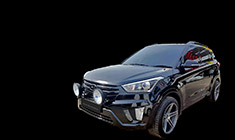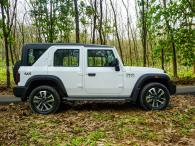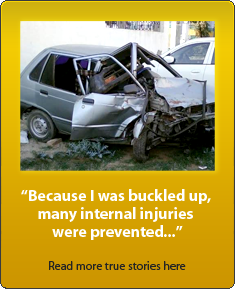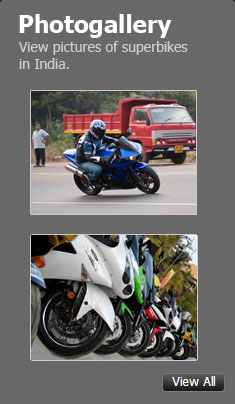News
Aftermarket brake pads and discs for the 5-door Maruti Jimny
There are too many brake pads to list so I have mentioned 15 of them. For my vehicle, I bought the Bosch BC556 brake pads which are ceramic and are not expensive.
BHPian Sankar recently shared this with other enthusiasts:
Note
This article is not about big brake kits but it is about options available for retaining the OEM caliper and rotor diameter of the Jimny XL JC74 or the Jimny JB74.
The 3 Door Jimny JB74 (K15B) and the 5 Door Jimny JC74 (K15B) have a lot of parts in common, the chassis from the front to where the transfer case sits and then from the rear radial arm mounts till the tail end of the chassis it is identical between the 3 door and the 5 door. The difference is an additional section of about a foot in length and a new cross member in the extended part in between.
Similarly, the cabin from the nose till about the front seats are identical in floor layout and cabin layout except for the shorter front doors and thus the placement of the B pillar. The custom-fit front floor mats of the 3-door Jimny are a perfect fit in the 5-door floor edge-to-edge. Powertrain, transmission and wheels are all the same. They are twins sharing a lot of components but front brakes are not on that list.
Suzuki used a 10mm thick 290mm diameter solid front disc for the JB74 3-door version but for the JC74 5-door version, they used a 17mm thick 287mm diameter ventilated disc. The brake calipers are also different between these two models with the JC74 calipers having a wider gap to accommodate the thicker brake discs. The brake pads are also not interchangeable between the JB and JC calipers.
There is a complaint of brake judder in the Jimny when applying brakes from higher speeds and whilst repeated braking. Many have reported this in the Indian Jimny groups and is a universally reported niggle, myself included. Brake judder is caused by:
- Either brake disc warping or developing hotspots and or
- Uneven transfer of friction pad material on to the disc caused due to hot spotting at high temperatures.
The text from Monster Sport website listing their JB74 upgrade brake discs is copied below. So it is understood that the OE solid discs of JB74 are also not up to scratch and Suzuki most probably upgraded the fronts to vented in the 5 door hoping to mitigate the issue.
"Brake Jadder is also the cry of Gymney.
In situations where hard braking is repeatedly due to the installation of high-performance brake pads or winding driving, normal brake rotors can cause heat distortion and cause brake jaders.
The Monster Sport brake rotors have been given an optimal heat treatment (hardened) that dramatically improves abrasion resistance, heat resistance and reduces heat distortion. Recommended for those who suffer from brake jaders." (sic)
To tackle this, some 5 door owners are using the JB74 upgrade slotted brake discs in their JC74. Not an ideal solution as you go further down you shall understand why. Whilst some 5 door owners are just upgrading the brake pads and keeping their factory brake discs. This is a sound option. Some have imported the JB74 upgrade brake pads from Japan and elsewhere and have been disappointed.
Suzuki/Maruti Suzuki when they added more mass and length to the JB74 to make the JC74 5 door Jimny they also changed the front braking system completely. The brake calipers, the discs and the brake pads are all different and not interchangeable (except for the brake discs, but not ideal as you will learn below). The brake pads are not interchangeable between these two vehicles either, because calipers are different. The calipers are different because the discs are thicker. The brake discs are different because Suzuki considers this an upgrade over the JB74 solid brake discs expecting the ventilated brakes to run cooler increasing life and decreasing fade.
The origins of the 5 door Jimny XL JC74 braking system can be traced to the 3rd generation Jimny JB53 with the Renault K9K 1.5L turbo Diesel engine. The JB53 inherited the upgraded vented brakes the origins of which can be traced to the Vitara/Escudo (TD01W/early TL52W) whilst the petrol powered JB23, JB33 and JB43 continued with solid brakes. Ventilated brakes are designed to run cooler than solid discs. To take the heavier K9K Diesel power plant few critical components were beefed up in the JB53; amongst which one is the vented front brakes and the other the strengthened front axle housing.
Which brake pads fit?
Some vendors have already figured out the fitment and have been selling the pads in Jimny circles but they have not let out the details in public, obviously due to the fact that they wouldn't be able to sell as many pads if the information is out. The brake pad part numbers wouldn't be shared with those who had asked for it, and even paying customers receive brake pads in boxes with no part numbers on the box or the pads. So I took this as a fun challenge to figure out the fitment, for both brake pads and brake discs and thus now we have options.
Brake Pads FMSI ID: D556, D807
- EBC DP979 Ultimax (NAO)
- EBC DP6979 Greenstuff
- EBC DP4979R Yellowstuff
- Bosch BP556 (Semi Metallic)
- Bosch BE556 (Semi Metallic)
- Bosch BC556 (Ceramic)
- Brembo P79 008
- Brembo P79 008N (NAO)
- Dixcel 371038-EC (NAO, µ Min 0.35, Avg 0.41, Max 0.50)
- Dixcel 371038-M (NAO, µ Min 0.39, Avg 0.40, Max 0.52)
- Dixcel X-371038 (Semi Metallic, µ Min 0.57, Avg 0.60, Max 0.68)
- DBA DB1266SS Street
- ADVICS SN567P
- Akebono AN370WK
- AC Delco 14D556CHF1
There are too many brake pads to list and some of the known names I did not mention are Bendix, Raybestos, Wagner, Ferodo etc. Some of these specific part nos are in fact "Made in India" (AC Delco and Bendix) as per the Country of Origin provided. In USofA, look up '98 Chevrolet Tracker 4 door to find matching brake pads. You can search with the FMSI ID D556 which will yield manufacturer cross reference for several OEM and aftermarket pads. For my friends in Australia since this model year Suzuki Vitara/Escudo was sold there you can find brake options locally.
But do your research and do your homework because none of these brake pads and actually "listed" for the Jimny 5 door aka Jimny XL aka JC74.
Brembo
EBC
ADVICS
DIXCEL
Note on Brake Friction Coefficient µ and DOT Codes
All street brake pads sold in the United States are required to show the brake friction coefficient as a two-letter code, for example, FE, FF, GG, GF etc. The first letter indicates the friction at low operating temperatures 93C to 204C and the second letter indicates the friction at higher temperatures 149C to 343C.
The coefficient of friction (µ) codes (SAE J866) assigned to the letter is as given below. A pad with GF rating would have a high initial bite when cold and reduced bite friction when hot and a pad with GG rating would exhibit high friction when cold as well as hot. The friction code gives the user an indication of how a particular brake pad behaves but is not absolute.
- D = 0.15µ to 0.25µ
- E = 0.25µ to 0.35µ
- F = 0.35µ to 0.45µ
- G = 0.45µ to 0.55µ
- H = > 0.55µ
- Z = Not Classified
The brake pad friction materials contribute to the coefficient of friction and the overall performance. Most options we have for Jimny are - 1) Non Asbestos Organic (NAO), 2) Semi-Metallic and 3) Ceramic - each having its own pros and cons.
I bought Bosch BC556 brake pads which are ceramic and are not expensive. I will keep the blog updated on how these perform as we go. Couple of photos of the actual brake pad are given below.



Continue reading Sankar's thread for BHPian comments, insights and more information.



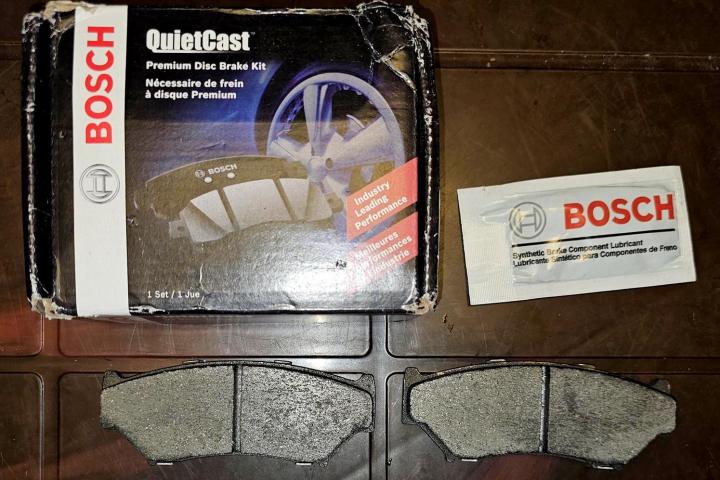




_0.jpg)







